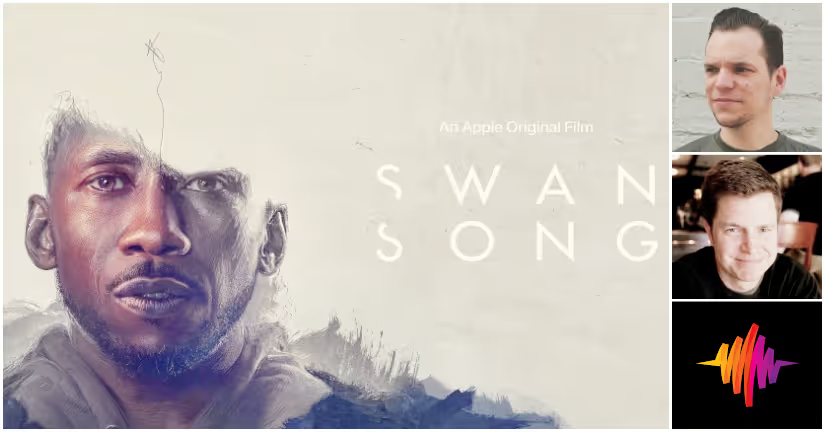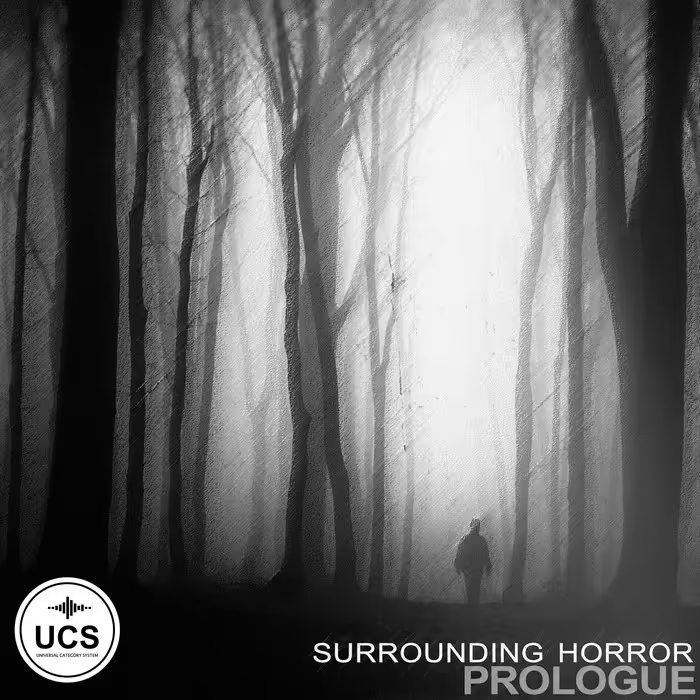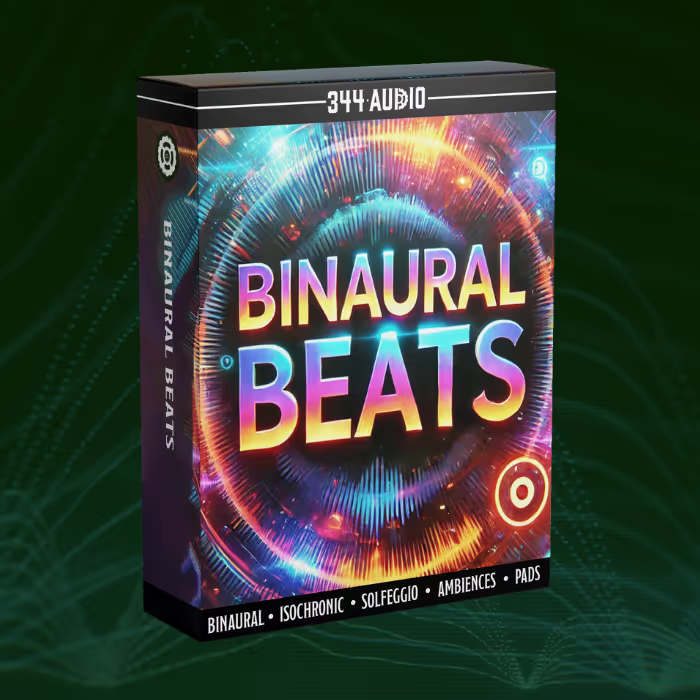Joseph Conrad wrote in his book Heart of Darkness:
“….it is impossible to convey the life-sensation of any given epoch of one’s existence – that which makes its truth, its meaning – its subtle and penetrating essence. It is impossible. We live, as we dream – alone.”
Conrad presents this idea that a person’s life can only truly be experienced by that person, filtered through the lens of their beliefs, colored by their memories and their pain and joy. One’s life can’t be wholly shared or understood by someone else. But what if a person’s memories and experiences could be transferred entirely to a blank-slate, clone copy? Would the clone feel and act as the person does? Would it be equal to the original in every way? Or is there still some unique essence of the individual that can never be shared? Never be duplicated?
In Swan Song , terminally-ill Cameron makes the decision to clone himself and have all of his memories transferred into his clone so that once he dies his clone could carry on as “Cameron.” This process is supposed to give Cameron peace of mind that his family won’t have to suffer his passing, but instead, it triggers an existential crisis. Cameron feels replaceable. Replaced.
Director Benjamin Cleary worked with supervising sound editors Steve Fanagan and David McCallum at Formosa Group to find ways of using sound and sonic perspective to support the story’s complex emotion – to keep the audience close to Cameron and convey his internal conflict.
Here, Fanagan and McCallum talk about their process of exploring many creative paths with dir. Cleary, and the challenges that posed for ADR after picture recuts. They discuss their approach to creating unobtrusive sounds for the near-future tech – not just how they created it, but why it sounds the way it does. They also talk about creating contrasts to sonically represent Cameron’s two worlds (at home and at the lab), capturing the essence of Cameron’s life for the memory transfer sequence, and more!
Swan Song — Official Trailer | Apple TV+
Swan Song is such an emotional story. How did writer/director Benjamin Cleary want sound to help tell this story?
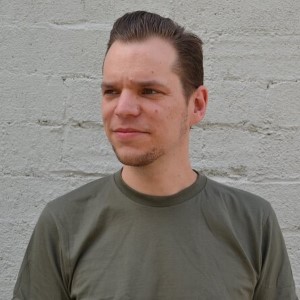
Steve Fanagan (SF): What was lovely about working with Ben [Cleary] was that he always talked about sound in terms of feeling and emotion of the story. The main direction we were getting from him was to make sure that the sound had a subjectivity. And in this case, it made sense for that subjectivity to come from Cameron, our main character.
If ever in doubt of what we should be doing sound-wise, we always had a sense that Cameron was the person to pull focus on and to present the world as it’s occurring around him — from his perspective. So you end up in a space of subtle work.
We weren’t trying to over-play sound. We were trying to use sound in small, effective ways that could put the audience into his perspective. It’s a very dynamic mix; scene by scene and moment to moment we’re doing lots of stuff, but it’s being done in small increments to hopefully help position the audience into that point of view, without being showy or intrusive.
We’re doing things like slowly changing the panning across a scene, or we’re EQing levels and backgrounds, or we’re changing the pitch of room tones slowly over time. We’re pulling focus and trying to stay emotionally in tune with where Cameron is at, at any moment.
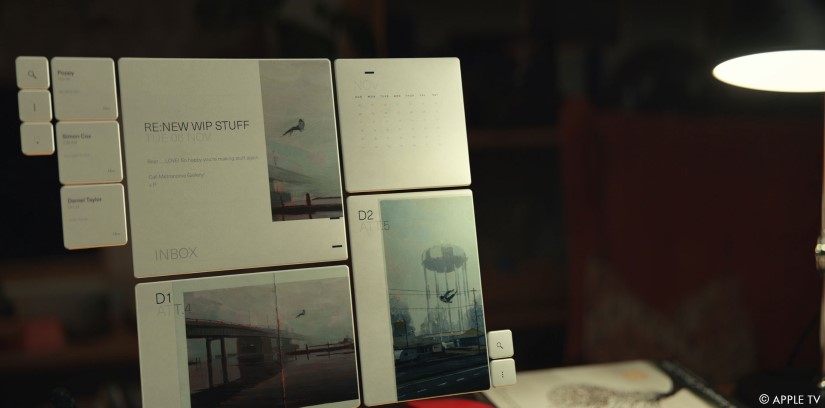
As you were spotting the film, what were your initial ideas for how to use sound as a storytelling tool on Swan Song?
SF: We didn’t really have a moment where we spotted the film in a traditional sense, because we were working in parallel with the picture editing.
Our first contact with the movie was through the script, for both of us. We can both talk a little bit about our process from there. When I read the script, I knew I was going to interview for the job — that there would be other people in the running for the film. So rather than just get on a call with Ben to talk things through, I sat and wrote my response to the script (and it wasn’t a brief response!). It was a 12-page document, just thinking out the different sound ideas I had for the film inspired by the writing, and things that I thought might be useful as ways for us to think about and talk about the sound in the film. Then when Ben and I spoke, we were able to talk from that perspective onward. He had very strong ideas about things like the tech that were going to play a big part in the film but in a subtle way.
Ben had this idea to use the concept of ‘calm technology’…
Ben had done all this research because he (along with the production designer and VFX team) was going to create this technology that doesn’t yet exist. It was going to have a feeling and a look on-screen that we needed to underscore and complement in what we did for sound.
Ben had this idea to use the concept of ‘calm technology,’ which is this relatively modern movement toward having the feedback from electronic devices being calmer, more subtle, less alarming, and more reassuring — rather than being cacophonic or noisy (and contributing to the noise pollution of the world we all live in).
We took that principle as our way into the tech sounds. In terms of design material, Ben and I would talk about something, and then I would send him rough sketches and drafts of things. So with the tech, I made a bunch of sounds, sent him a folder, and said “Hey, here’s a collection of material based on what we’ve been discussing. What do you think?”
…the sound work evolved in tandem with that picture edit, which is the ideal way to work.
Getting his reaction to that through a follow-up conversation, or based on what he and picture editor, Nathan Nugent, used in the cut, we were able to develop things from there.
So it was a very organic process over the months that we worked on the film. We were both feeding material to the cutting room as they were editing picture, and the sound work evolved in tandem with that picture edit, which is the ideal way to work.
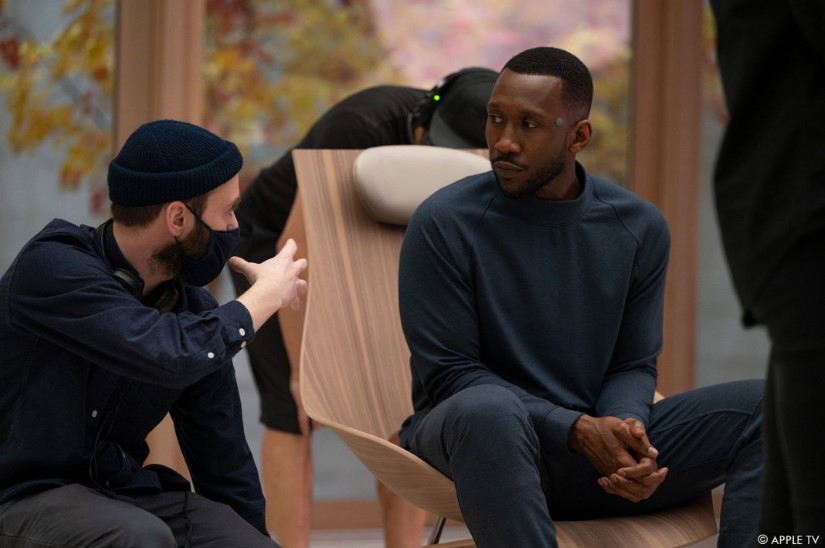
The technology in the film has that Black Mirror feel: really slick yet discrete. What were some useful sources or some useful tools for creating those tech sounds?
SF: From our early conversations with Ben, we realized we wanted to use acoustic sounds, rather than synthetic sounds. We wanted to use sounds that we recorded and then we’d manipulate that into something that sounded more device-like.
We had a breakthrough moment when Ben called to say he’d been thinking about the sound of a cork popping and how pleasing a sound that is. He wondered if there’s something in that sound that could be an inspiration for some of the tech. So I got some bottles and recorded some stuff and went through my library to find some sounds that I liked that were in that vein — either things I had recorded previously or from existing libraries.
‘Speakers’ is really simple to use, but it has some very cool parameters with delays and echoes and pitching.
Then we manipulated those. The main tool I used was a plugin called Speakers, which is a relatively affordable plugin from Audio Thing. It’s sort of like Audio Ease’s Speakerphone, that type of convolution. Speakers is really simple to use, but it has some very cool parameters with delays and echoes and pitching. You can pitch the echo of what you’re doing at a different pitch than the original sound and combine them. You can do all sorts of interesting, creative things with it.
We fed sounds into Speakers and played around with them from there. The idea was to use real sounds so there would be a natural acoustic property to them. So, if you pop a cork, it’s not just the cork sound that you hear. You hear the sound reflected in the space you recorded it in and that can be quite pleasing to the ear. We’re so used to sounds in a space — hearing a sound reflected in the space that we occupy. The sound of a cork popping in your kitchen is different from a cork popping in a carpeted living room. So the quality of that acoustic felt like a cool thing to play with, manipulating into something that felt more digital.
You hear the sound reflected in the space you recorded it in and that can be quite pleasing to the ear.
That was the basis for it. Additionally, in the script, Ben had described the internet that Cameron was interacting with and the computers he was interacting with as having a beautiful design. He mentioned Dieter Ram’s principles of good design. There was inspiration in that idea that these sounds should be smooth, warm, and have a presence but never be distracting.
The tech in this film was never supposed to distract from the story. You think about the devices we all have in our pockets. Every time we take it out, we don’t marvel at it. We just expect it to be as sophisticated as it is; we take it for granted. So Cameron using these contact lenses or this AR that he’s interacting with, none of that is unusual to him. It’s all just functional. For the tech sounds, we wanted to do something that sold that functionality and normality.
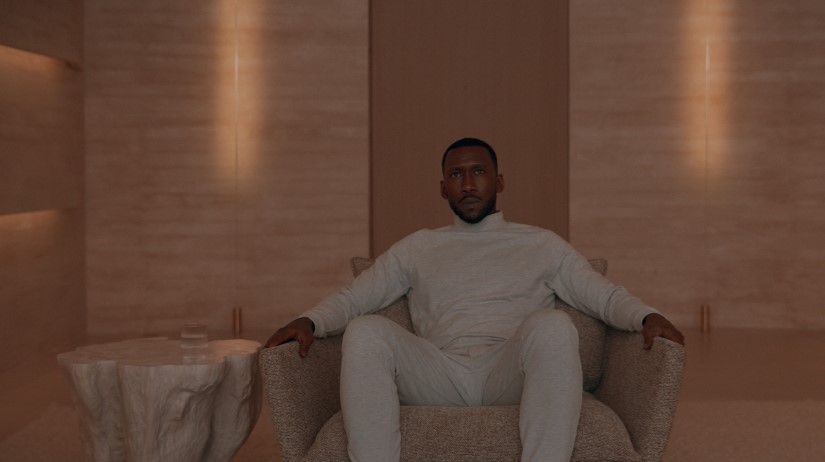
As you were talking, I was thinking maybe you worldized the sounds. But you used the Speakers plugin as an alternative to that?
SF: It was a little bit of a mixture as we used some EQ on those sounds. But Speakers — like Spearkphone or McDSP’s FutzBox — allows you to pick the speaker you want to play the sound through. I spent a lot of time trying to find what I thought this would be. Every device in this world of Swan Song is heard through sophisticated earbuds. So we didn’t want to futz things in a way that we might for a contemporary set film. We felt that whatever futz we used should feel hi-fi and better than any microphone or speaker of the present moment. It felt like we had this license to create sounds that were a bit rounder and broader and of higher fidelity.
…what if in this reality there aren’t transducers or transistors anymore?
I remember having an early conversation with David; he put this idea in my head that I kept thinking about: what if in this reality there aren’t transducers or transistors anymore? What if we’ve figured out a better way to reproduce sound in this near-future — either in headphones or speakers or microphones. Maybe the tech at this point in time could better emulate an ear, better emulate how we naturally hear.
That was a lovely bit of inspiration that he gave me. I felt like, wow, we can do something interesting with this, do something that doesn’t rely on some of the tropes that we have for more contemporary filmmaking. It gave us the freedom to experiment with something new.
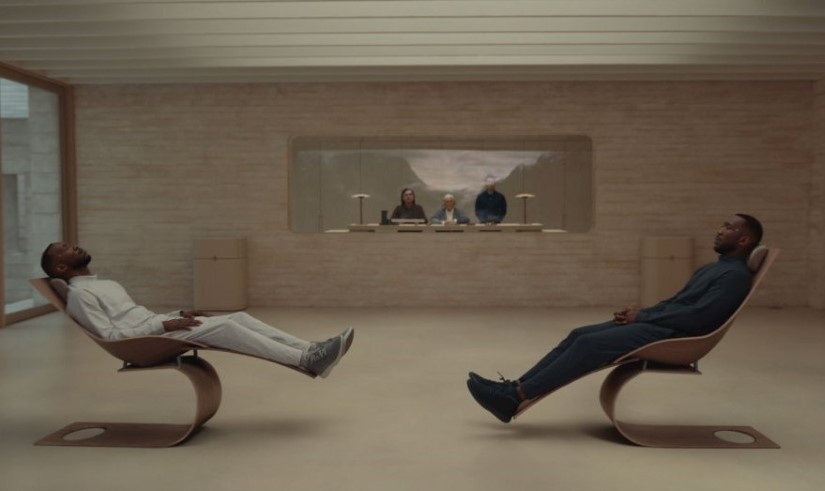
That’s so cool! I love that you’ve taken this idea of advanced tech so far that you’re thinking beyond transducers…
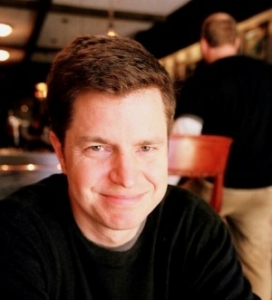
David McCallum (DM): There are many moments in the movie where somebody is hearing something from a device or speaker and we spent time discussing whether or not we needed to justify how or what they were hearing. As Steve outlined, the tech is seamless for the characters. As an example, in Ben’s mind, all of the dialogue in the opening train scene would be in Cameron’s earpiece, as opposed to live in the train.
There are also a number of scenes in the lab where we’re hearing people from different rooms, through the glass, or through different communication devices such as Poppy’s phone call with Jack. Often, there aren’t visual cues to explain where the sound would be coming from.
We spent time planning where, how, and what the characters are hearing.
We spent time planning where, how, and what the characters are hearing. Is it all in the earpieces? Well, that sounds a bit boring over the course of the whole movie. So could we instead envision a kind of futz that creates a sense of space and sound in space, but that isn’t necessarily coming from an old-fashioned PA or speaker.
We experimented with how sound should sound in the rooms when it’s not two people standing beside each other. The lab is the space where we played with this most.
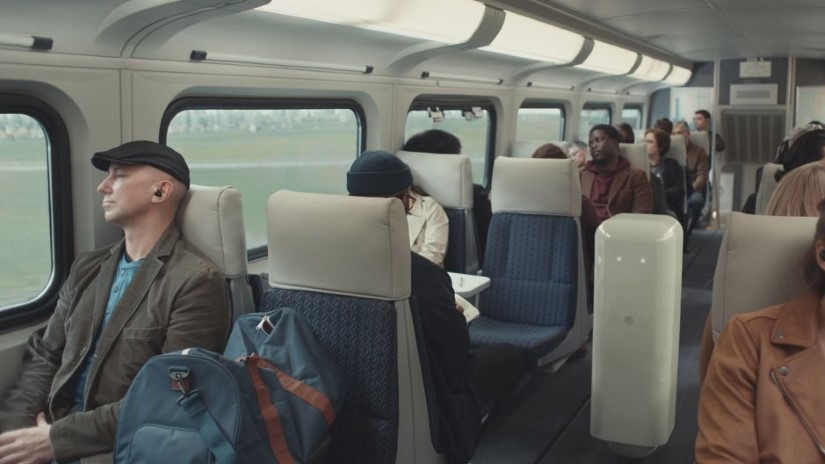
Interesting! And so if they’re listening to the world through their earpieces — because you’re right, those earpieces are constantly in — is there a degree of noise cancellation that’s happening via this technology?
DM: I think, yes. There’s not only noise cancellation, but there’s the ability to have private communication. For example, the Bot on the train seems simple, but once you start exploring it there are questions that come up. Is it a Bot that Cameron has agency over because he sees the Bot every day or does it have a form of AI?
…the Bot on the train seems simple, but once you start exploring it there are questions that come up.
Does the next passenger hear the Bot? No, we didn’t think so because here the sound is in Cameron’s earbuds. When the Bot moves away, we don’t hear it talking to the next passenger because the voice is no longer in Cameron’s earpiece. It has moved on to a private conversation with the next customer.
We settled on the idea that the Bot itself is an intelligent AI that knows it’s talking to Cameron Turner and engages with him in a personal way.
We put a lot of thought into casting the Bot and I was thrilled when Ennis Esmer agreed to voice the Bot for us. Ennis is a talented actor with lots of comedic skill. We had a great session putting a voice and character to the Bot.
 Tesla Model X 2015 electric full size crossover SUV sport utility vehicleKrampfstadt Studio65,00 $0,00 $100% OFF
Tesla Model X 2015 electric full size crossover SUV sport utility vehicleKrampfstadt Studio65,00 $0,00 $100% OFF
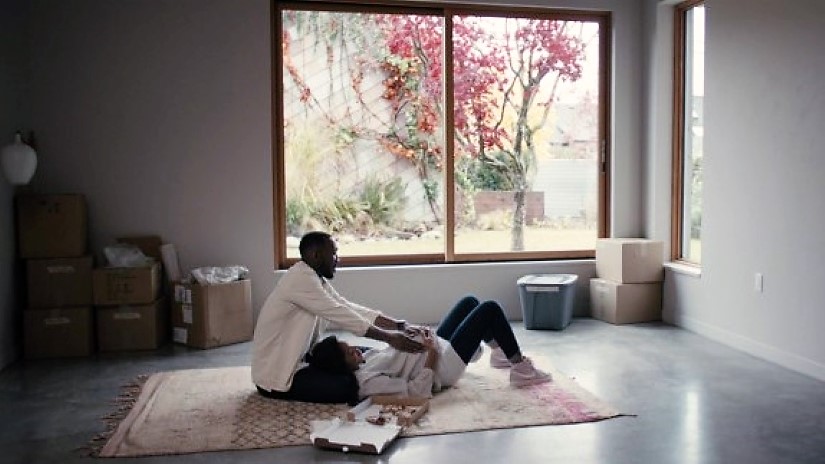
I love that so much thought went into the technology — not just how it sounds, but how it happens in this reality and how that would have an impact on how it sounds. There are so many layers to this concept.
Let’s move on and look at the memory transfer sequence that happens in the lab. Cameron is transferring his memories into his clone, Jack. There’s so much that you could have done here, so many different directions you could have gone. So what were some creative choices you made or ideas you explored in how best to use this section for sound and for storytelling?
SF: To go back on your previous point, but also to lead into this, I think what’s really interesting in terms of how deep we thought these things through and our theory of these things and our philosophy for them, is that it was very much led by Ben.
He had such a brilliant vision for how all of these things were interconnected. He was very interested in the background of them, why they might be, and what those differences between the present and this near future might be.
…Cameron and his clone Jack suddenly have the same memories. They suddenly are the same person.
In terms of the download (memory transfer), one thing that pops up over the course of the film (and particularly after this moment of the download) is that Cameron and his clone Jack suddenly have the same memories. They suddenly are the same person. And for Cameron, this is very troubling in an emotional way because he’s hearing this other person have his memories. He’s hearing this other person laugh and joke about some of his memories. He’s hearing him get emotional about these memories.
And so there was this idea that Ben and Nathan talked about as they were editing and shared with us, which was that you’re into this idea of the ownership of memory from this point in the story. Cameron is no longer the only owner of those memories. Jack remembers them just as well as Cameron does and as viscerally and emotionally as he does. That felt like a really strong thing to tap into.
…they realized there was a value in making that slightly violent….The download needed to be overwhelming.
So with the picture edit of the download, they realized there was a value in making that slightly violent. From Cameron’s point of view, all of these memories are getting pulled out of him and pushed into this other life. So we took that as our inspiration. The download needed to be overwhelming. It had to have some progression in it; it couldn’t just be loud all the time. It had to have moments of all aspects of life. You’re essentially watching the essence of someone’s life and self. So there are all these visual cues to play off of. We had also spent quite a bit of time working back through material they’d shot for the film for memory sequences — those beautiful little family moments, like those early moments of Cameron and Poppy dating, or them pregnant with Cory, or Cory as a kid, or Cameron remembering his mother when he was a child and her love of edamame.
There was all of this beautiful dialogue material of them interacting, and them interacting with Andre (Poppy’s twin brother) as well. So we had gone through and selected and built a library of that material for some dialogue design, and it felt like we could use a lot of that in the download sequence. We could play with that. We could play with shouting. We could play with crying; we could play with laughter. And it could all happen and move, and be part of this massive, fast-forward zip through a life as it’s pulled out of Cameron and pushed into Jack.
We had also spent quite a bit of time working back through material they’d shot for the film for memory sequences…
The closest comparison I can think of is someone’s life flashes before their eyes if they have a near-death experience. In this case, his life is literally flashing before him as it’s being pulled in memory form into someone else. There’s something really interesting in that, and as a result, it needed to be rich. It needed to have lots of detail. His mother is in there; his son is in there. We have all sorts of stuff of Poppy and Cameron’s early dating in there.
Some recordings of David’s children are in there. We thought it would be nice to have kids saying Cameron’s name as if it was a memory from school. And then we have rich sounds of the city where he grew up.
Cameron goes under and loses consciousness so we have this beat of silence before it begins.
We have interactions with different people from throughout his life. We have bits of a baseball game, and bits of a basketball game. There was all of this rich detailed material that if any of us thought back through our own life, we would be able to pick those little moments. So it just felt like this really rich thing to do. The film edit was so strong and set the tone for us to follow.
They had done this gorgeous thing in the edit as well, as we’re leading into that moment. Cameron goes under and loses consciousness so we have this beat of silence before it begins. Jay Wadley’s score builds to a crescendo and stops. Then we have this beat of silence.
There is no score for the memory transfer, so we had all this space to run this dialogue and sound design idea, with a few fragments of needle drop music.
There is no score for the memory transfer, so we had all this space to run this dialogue and sound design idea, with a few fragments of needle drop music. When we hit the far end of it, it goes to silence again. That dynamic that Ben and Nathan built into the edit (and it was built into the writing, too), gave us huge room to play with something that was dynamic, layered and textured, and hopefully emotional and visceral for the viewer.
DM: Steve’s forgotten one key part of this story, which is that the download changed a lot over the course of our time working on it. Steve’s original design was beautiful. That stayed with us for a while and I became pretty familiar with it because we took it to every ADR session — all of the principle cast and all of the crowd ADR sessions — because we wanted to record vocal details with our different actors to add into the download.
…the download changed a lot over the course of our time working on it.
None of what we wanted to record needed to be coherent to camera, but we wanted the actors to understand what we were looking for so we showed them the sequence in advance. I watched it with everyone and they all had the same reaction of “Oh, wow. That is so beautiful.”
But about two weeks before we were getting ready to mix, we got a new cut.
The download was now longer and the shots had all changed. Steve and I got on a call to talk about what had happened here. Ben and Nathan said to Steve that it was too pretty and that it needed to be violent.
Ben and Nathan said to Steve that it was too pretty and that it needed to be violent.
The whole structure of the download needed to change and it then became what Steve’s just described, but he forgot the beautiful part that came before. We lived with this beautiful section and it sounded absolutely lovely. But it was sweet, heartfelt, and emotional. Now what we have is still partly sweet, but also partly aggressive, partly scary, a bit more like life.
As a result of the change, the sequence became more complex sonically, and I think that change was made after Nathan and Ben lived with Steve’s design in their picture edit for a few weeks before realizing that it was just too nice.
From a working perspective, it did take us a few days to get our heads around the fact that this very complex sequence had been completely restructured.
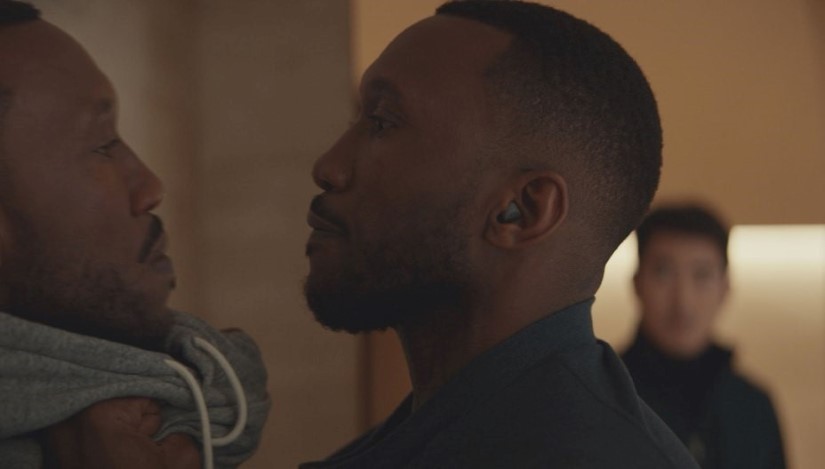
As a viewer, I like that the download didn’t take a “sweet” direction. Having that violence, as you say, that conflicting feeling of watching someone’s whole life being ripped out of his head, adds a layer of emotional complexity that is more compelling…
DM: Editing scenes multiple times was a part of our experience on Swan Song. Ben was continuously responding to what we were doing while he was picture editing. It was common for him to be complimentary, saying things like, “I love this. This is great. It’s really, really good. I’d love to see it again though, with another approach.”
The idea was that once we had something in the movie Ben was still interested in continuing to explore what else it could be. It was open-ended for him, and there was no stop to that. I literally re-edited the dialogue between Cameron and Cory when they are drinking apple juice near the end of the film from the assembly on our second to last day of the mix. In my original edit, I had removed a lot of what I felt was unwanted noise. But Ben felt it should be grittier, more like a documentary. So I went back to the beginning and edited it again.
…Ben always wanted to destabilize things in order to find something new and better.
That was the approach we had when we started on the movie and it was the approach we still had on the last day of the mix: what could this be? What could we do differently? And it wasn’t because he was unhappy with how it sounded or how it looked, but because Ben always wanted to destabilize things in order to find something new and better.
So the idea that we were redoing something became common. Steve designed many of the sound elements multiple times. Ben wanted to explore. And he wasn’t really interested in starting that exploration until he had something in front of him that he liked. While we did often find our way back to the first version, the exploration always made our work better.
Ben wanted to explore. And he wasn’t really interested in starting that exploration until he had something in front of him that he liked.
During our mix, Bernard [Gariépy Strobl, re-recording mixer] would mix a scene and then we’d review it with Ben, and then we’d remix it. We’d play it for him a second time, and then maybe we’d put it to bed and move on. But we knew we’d be going back again.
SF: As David said, it was very much the way Ben wanted to work to make sure that we didn’t just have something that was good and we are all happy with, but we had the thing that we felt pushed it as far as we could, that we’d found the essence of something.
If we had something we all liked, it didn’t necessarily mean that was the best version of it.
I think in the edit, they were very much in a distillation process. Nothing was sacred to them. It was like, “What can we do to make the best version of this film? What can we do to make this storytelling as clear and as complex and beautiful as possible?”
And it was the same with the sound; we just needed to explore things. If we had something we all liked, it didn’t necessarily mean that was the best version of it. And it was still worth us hunting for that.
I found that very inspiring and very invigorating as we work through things because it meant that no stone was unturned from our point of view. At no point were any of us coasting. You always want to have that feeling on a film — where you’re doing something that’s specific for it, and that’s true to it, and wouldn’t work on another film; it works specifically for this film. That was a brilliant challenge.
[tweet_box]Enhancing the Emotion of ‘Swan Song’ Through Sound – with Steve Fanagan and David McCallum[/tweet_box]
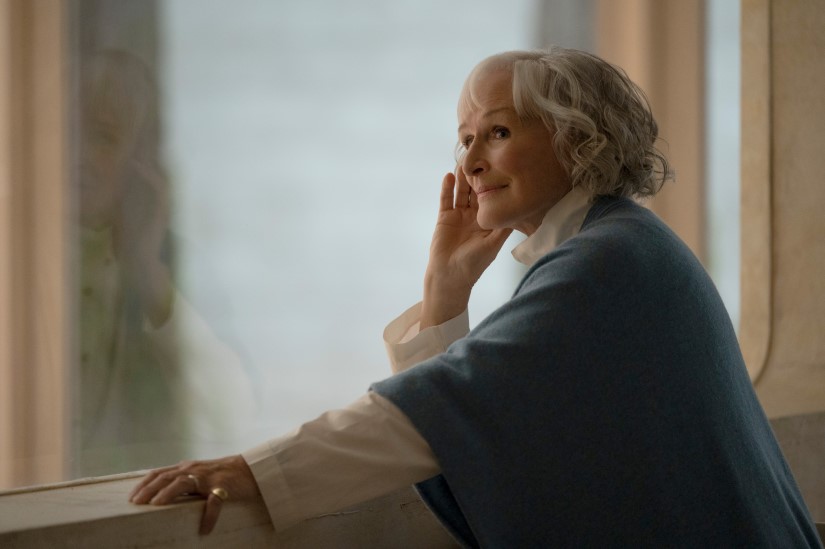
What was the most challenging scene for you in terms of sound? Why? What went into it?
DM: For me, the most challenging scene was the dialogue sequence between Cameron and Dr. Scott when they’re sitting on the pier discussing whether Cameron would go forward.
It actually now plays like a pretty simple scene, but the difficulty here was two-fold. First, the scene’s original placement in the script was later in the movie, after Cameron had met Kate rather than before, so the tense of the dialogue is wrong. They’re speaking about something that “was” rather than something that is “going to be.”
…there was a lot of weaving between ADR and production sound, and a lot of choosing what dialogue to use narratively.
The picture edit restructure also meant that the audience did not yet have information that was implied in this scene as it was written so we needed ADR to add information. It’s a long scene though, and neither Ben nor the actors wanted to record it all in ADR. So there was a lot of weaving between ADR and production sound, and a lot of choosing what dialogue to use narratively.
Recording-wise, this was hard ADR. For the session, Glenn Close was in Greece, Ben was in Dublin, and I was in Toronto. We had a lot of cues that needed to flow into and out of production sound. I had not recorded with her before, so there was no shorthand to lean on during the session. Glenn worked very hard, incredibly so, and we recorded a lot of takes. The scene occurs in reel one, but we went at it twice. It was both the first and last scene we recorded that day.
I probably edited both the ADR and dialogue for this one scene upwards of ten times.
I don’t think we actually knew if we had the scene until it was done. We went back on it multiple times while mixing, either to change a take or to remove a line entirely. There was just a lot of uncertainty about what the scene should be.
I probably edited both the ADR and dialogue for this one scene upwards of ten times. We finally nailed it in Dublin about a week into our mix. I had an idea driving home one night to use more ADR off the top rather than crossing to production as soon as we could. This changed the rhythm of the performance and it fell into place. Ben was ecstatic, while I was relieved.
Generally speaking, there was a lot of creative uncertainty throughout the film, and by that I mean: what’s the dialogue going to be doing?
Generally speaking, there was a lot of creative uncertainty throughout the film, and by that I mean: what’s the dialogue going to be doing? There are multiple times when we’re not specifically with people who are speaking on camera. Steve and I collaborated a lot on dialogue that was occurring off-camera. I did some of it and he did some too. I would send him takes I’d found digging through production slates to include in his sound design, and he ended up building a very elaborate dialogue design track with his material.
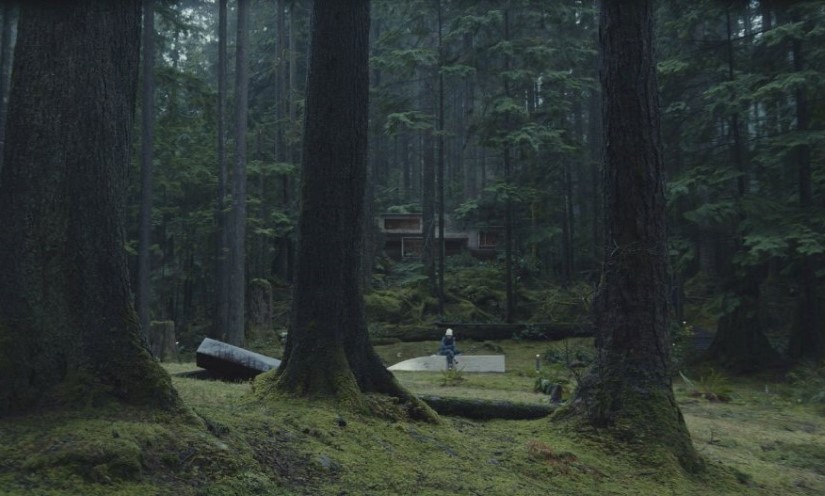
SF: From my point of view, there’s a lot of detail in the whole film and there was no easy scene. There was no simple scene. There was no instance of taking a sound out of the box and just putting it there. But that was the beauty of working on this film. Everything needed a bare-bones build. Everything we were putting against picture had to have a good reason for being there. It had to have a purpose and had to have a flow within a scene, as it does in any film.
There was no instance of taking a sound out of the box and just putting it there.
That was challenging throughout – how to get into a scene, how to work through it, and how to maybe have it handoff to the scene that was coming. That always felt like a really interesting challenge.
We had some basic rules and ideas that we created for spaces, and we have lovely contrasts in the way that the film was shot. For instance, the Turner home is a suburban house that’s quite warm and quite lovely looking inside; it doesn’t feel high-tech but is in this high-tech world.
That’s contrasted with the ruggedness of the island where Dr. Scott’s lab is based. Suddenly, you’re in the middle of nowhere and you’re surrounded by nature. The only people for miles and miles are the people based in the lab — the patients or the staff — and there’s not very many of either of them. So you get to build this environment that hopefully reflects that isolation and reflects that contrast with the world we’re used to seeing when Cameron is at home.
We had some basic rules and ideas that we created for spaces, and we have lovely contrasts in the way that the film was shot.
The big challenge was just making sure that we explored all of that and found the right sounds and the right acoustic for all of those ideas. For the island, we got some really lovely original recordings from Jason Cushing at SoundMorph, who went out and recorded in the Pacific Northwest for us. We had a great collaboration with Thomas Rex Beverly, who has several libraries that he’s built from that area. One of our effects editors, Brennan Mercer, had done some beautiful recordings on Vancouver Island that were invaluable.
All of that material fed into that environment, and fed into that idea of isolation and that idea of space. When we’re in the forest with Cameron and Kate, it’s not necessarily raining, sometimes it is, and sometimes it’s the aftermath of rain. But, there’s always water dripping. There’s always water falling off the branches. We had this lovely melting snow library from Thomas Rex Beverley, where you can just hear that snow hitting off branches as it dissolves. That tiny detail was lovely – to have the space to use and feature it. It spoke of the quiet isolation of Arra.
You have to pick the right sounds so they’re not distracting in these rich dialogue scenes.
Having the space and having the breath in this film where sounds like that could feature and could have significance was quite amazing. Having wildlife off in the distance to help establish that space — like the idea of a loon calling from across a lake, or hearing a stag rutting in the next valley over — and hearing that echo through the forest and enhance that sense of isolation or that sense of richness was lovely. You have to pick the right sounds so they’re not distracting in these rich dialogue scenes. For me, it was really wonderful to get to play with all of that. We, as a sound effects crew, had a great time with it.
The sound work on the film was a big team effort. We had a great sound editorial crew of David’s colleagues in Toronto. Also, it would be hard to overstate the brilliant, creative contribution of our re-recording mixer, Bernard Gariépy Strobl. It was a really wonderful collaboration for us all and a career highlight to be part of this beautiful film.
A big thanks to Steve Fanagan and David McCallum for giving us a behind-the-scenes look at the sound of Swan Song and to Jennifer Walden for the interview!
 Tesla Model X 2015 electric full size crossover SUV sport utility vehicleKrampfstadt Studio65,00 $0,00 $100% OFF
Tesla Model X 2015 electric full size crossover SUV sport utility vehicleKrampfstadt Studio65,00 $0,00 $100% OFF

